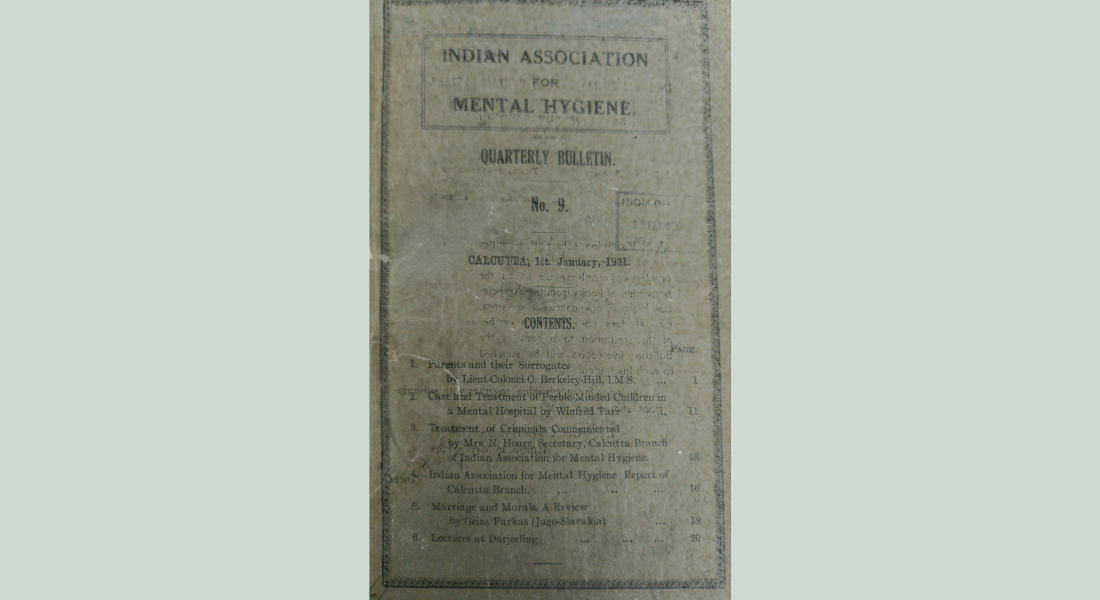Newsletter 2 May
Dear Reader,
I draw your attention to the mental hygiene movement, which was one of the first global health movements that interconnected the metropole, the colonies and the globe allowing the networks of psychiatrists, psychoanalysts and anthropologists to formulate discourses on mental illness and well-being. Mental hygiene was deeply influenced by early ideas of degeneration, eugenics and sexology. Hygienists’ ideas shaped notions about mental health that are central to the making of family, community and citizenship. The mental hygiene movement propagated that preservation of the mind against social, hereditarian and environmental factors was crucial for better governance.
In 1893 Isaac Ray, founder of the American Psychiatric Association, defined mental hygiene as ‘the art of preserving the mind against all incidents and influences’. Clifford W. Beers attempted to commit suicide at the age of twenty-four. After his internment and recovery at the mental hospital, he wrote his autobiography titled A Mind That Found Itself. His autobiography brought him immediate recognition and he became a champion of the mental hygiene movement. He was the key figure behind the establishment of the National Committee of Mental Hygiene (1909) in America. The broader goals were to protect ‘the public mental health; promote research into and dissemination of material pertaining to the ethology, treatment and prevention of mental disease’. By the 1920s, the mental hygiene movement had become an international movement.
It was during my doctoral research that I succumbed upon The Quarterly Bulletin of the Indian Association for Mental Hygiene on a hot summer day in the National Library, Kolkata. The journal was brittle and very fragile. I made a request to scan the journal to the director of the library. I was anxious as this journal was not available elsewhere. It was here that I came across a Bengali gentleman whose curiosity pleasantly surprised me! He not only helped but went out of his way to find more records. This was a beginning of friendship between the librarian and a scholar. For several years, he would write to me if he found something interesting on topic of my research. The thirst of and passion knowledge can bring together people.
The journal is an extremely rich source for national and international activities of the mental hygiene movement. Along with reading the national and international archives and conference proceedings related to the mental hygiene movement, the published works that are extremely insightful are Mathew Thomson’s contribution, Mental Hygiene as an International Movement, In Paul Weindling (ed.) International Health Organisations and Movements, 1918-1939, which gives details regarding the extent and reach of the movement. The other important study is Kathleen W. Jones, Taming the Troublesome Child: American Families, Child Guidance, and the Limits of Psychiatric Authority. Jones’s work provides interesting critical analysis of the child guidance which was regarded as specialised knowledge that only mental hygiene professionals had which allowed them to deal with the ‘problem’ child.
By Shilpi Rajpal
Postdoc

Subscribe to our newsletter
Enter your email to subscribe to CULTMIND Kaleidoscope.
